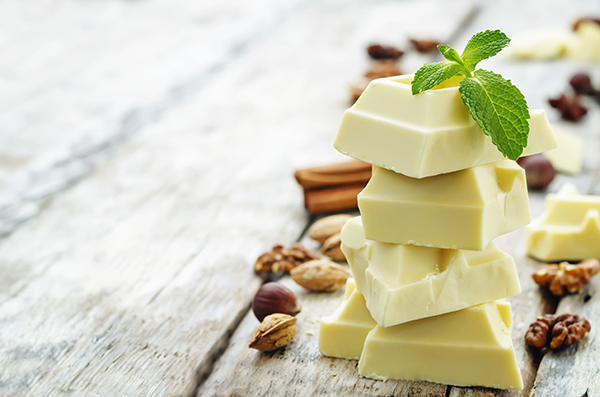It’s always a great day when you can equate a delicious snack with health benefits. But there is a reason that a person will usually reach for something like a candy bar or bag of potato chips over an apple when they are itching for some kind of comfort food or to satisfy a craving for something sweet.
Why is chocolate so satisfying? Well, even though we probably all wish that we could eat 100% healthy all the time, things like sugar and fat usually do a much better job of satiating a snack craving.
So, of course, when we hear that things like chocolate might be healthy for us, we are 100% on board.
Is Chocolate Really Healthy For You?
There are three main types of chocolate — dark, milk and white. Each has its own unique history, and while they have some things in common, they eventually diverge on their paths to becoming their own unique products.
Dark chocolate usually gets the most credit for being the healthy option. And we all know that milk chocolate has fewer benefits. But what about the dark horse of the three? Is white chocolate a healthy option?
Today we’re going to take a look at white chocolate — what is it exactly? Why are people so polarized about it? And can we eat it daily for a healthy snack?
White Chocolate — What is it really?
If you have any kind of interest in the world of chocolate, you may have come across the argument between people who claim white chocolate is chocolate and those who say that it most certainly is not.
The chocolate itself can be traced back many thousands of years to Central America. White chocolate came into existence or at least was patented, in the 1930s by the ever familiar Swiss chocolate giant Nestlé. It is claimed that the first white chocolate was created and distributed in the 1930s because there was a powdered milk surplus after World War I.
From there, white chocolate has enjoyed some highs and lows. It’s never reached the heights of its milk and dark counterparts but does have a steady fan club of defenders.
Why Do Some People Claim That White Chocolate Isn’t Actually Chocolate?
It comes down to ingredients. White chocolate is made from cocoa butter, sugar, and milk and does not contain any cocoa solids. On the other hand, dark chocolate is made mostly of cocoa solids and cocoa butter, and a little bit of sugar. Milk chocolate also contains milk powder, which is what gives it a creamier texture and milder taste.
Since white chocolate does not contain any cocoa solids, some “purists” claim that it is not actually chocolate. We’ll leave it up to the reader to decide for themselves.
Whether or not you think of white chocolate as actual chocolate or not, you may still be curious if it is healthy.

White Chocolate vs Dark Chocolate
White chocolate can’t claim all the health benefits that dark chocolate imparts to a person’s health. But that doesn’t mean it’s devoid of benefits.
Here are some of the claims we’ve come across in our research.
Some studies claim that the heart benefits we hear about associated with dark chocolate are linked to the flavonol (antioxidant) content mostly found in dark chocolate.
However, even though white chocolate, doesn’t have the same concentration of flavanols, it can still provide cardiovascular benefits, such as platelet enhancement and regulation of bad cholesterol.
And since white chocolate is high in cocoa butter, it is great for skin since it has anti-ageing properties, as well as thickening and protective effects on nerve sheath.
Dark chocolate may be able to help prevent anemia because it is high in iron, but white chocolate can counter with the fact that there is a high dose of calcium found in the dairy ingredients. Calcium is of course needed for the health of bones.
The Future of White Chocolate
There are some chocolatiers who are investing a lot of time and energy into modernizing and revolutionizing white chocolate. (It does feel a bit dated, doesn’t it?)
So what does the future of white chocolate have in store? There are some interesting and exciting things coming out of the world of white chocolate. For example:
Milk alternatives. “Mylk” and milk alternatives are popping up everywhere and the world of white chocolate is no exception. Soy, almond, rice, coconut, and oat milk are being used to substitute dairy milk in white chocolate, and the results are delicious.
New flavour combos. One of the exciting things about white chocolate is that it is fairly neutral and therefore acts as a great base for interesting pairings. Some new pairings include citrus oils, dried flowers, salty bits, and a range of other flavours that really complement the texture and subtle taste of white chocolate.
Non-cocoa butter. Traditionally white chocolate contains deodorized cocoa butter, which is high-heat steam-treated cocoa butter. Deodorizing cocoa butter limits the chocolate flavor and alters the way it tastes and the texture of it.
Non-cocoa butter resists oxidation longer than deodorized cocoa butter and retains the naturally occurring vitamin E, which is a fat-soluble micronutrient and necessary for healthy bodies. Non-cocoa butter not only tastes better, it is also better for our nutrition.
White chocolate will always have a place in our hearts — we always love an underdog story. Whether or not you classify this special treat like chocolate or not, it is still a delicious treat that has some health benefits.
It may not be a heavy hitter like a bitter cousin, dark chocolate, it still holds up on its own, and it looks like it’s got a bright future ahead of it.
We encourage you to give white chocolate a chance, especially if you’ve discounted it lately. You might just be surprised. And of course, enjoy in moderation and delight in every bite.


